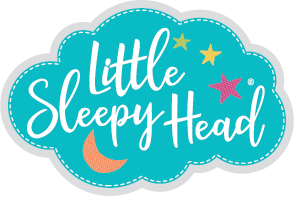Raising Resilient Kids: Teaching Emotional Intelligence and Coping Skills

Share
Parenting comes with plenty of unexpected twists—one moment, your toddler is laughing, the next, they're in full meltdown mode over a pillow case being "too scratchy." Teaching emotional intelligence and resilience is one of the greatest gifts we can give our kids, helping them understand their emotions and navigate life’s ups and downs.
Believe it or not, even a soft pillow can contribute to emotional well-being! A cozy, familiar toddler pillow can become a comforting anchor during stressful moments. Let’s dive into how we can build resilience in children, with a little help from the right pillows and pillowcases.
What is Emotional Intelligence?
Emotional intelligence (EQ) refers to the ability to recognize and manage emotions effectively.
Children with strong EQ tend to:
✔ Express their feelings in healthy ways
✔ Show empathy toward others
✔ Adapt better to changes and challenges
But here’s the thing—kids don’t automatically develop EQ. It’s our job to guide them, using everyday interactions and small comforts, like a child’s pillow that helps them feel secure.

Simple Strategies to Raise Emotionally Resilient Kids
1. Label Their Feelings
Young children struggle to articulate their emotions. Instead of dismissing their frustration, help them put it into words: “I see you’re sad because you can’t find your favorite pink pillow. That must be hard.”
2. Normalize Big Emotions
Every emotion is valid—even frustration over a new pillow feeling "different." Instead of rushing to fix things, reassure them: “It’s okay to feel upset. Let’s take deep breaths together and figure out a solution.”
3. Introduce Simple Coping Strategies
Comfort objects can make a world of difference. A best children’s pillow or best hypoallergenic pillow provides physical reassurance that helps kids self-regulate.
- A familiar soft pillow can act as a soothing anchor during meltdowns.
- Machine washable pillows allow kids to keep their comfort item fresh and clean.
- Pillows with hearts or pillows with green add a personal touch that makes bedtime and naptime feel extra special.
- Long pillow pillowcase choices offer added comfort, making relaxation easier for little ones.
Encourage kids to snuggle their little pillow, take deep breaths, or even press their cheek against a washable pillow to self-soothe.
4. Teach Problem-Solving
Instead of solving every challenge for them, encourage kids to think through solutions: “What do you think would help you feel better?”
Giving them choices—like picking their favorite pillows washable for nap time—helps them feel more in control.
5. Lead By Example
Kids model our emotional responses. Show them how to handle frustration: “I’m feeling overwhelmed, so I’ll take a break and rest my head on my best soft pillow for a few minutes.”
Final Thoughts
Resilience isn’t about eliminating life’s challenges—it’s about equipping kids with the tools to bounce back. Teaching emotional intelligence, offering comfort (yes, even through their pillow pillowcase!), and encouraging self-soothing strategies set them up for lifelong success.
So the next time your little one gets overwhelmed, maybe all they need is a snuggle and the perfect pillow.




